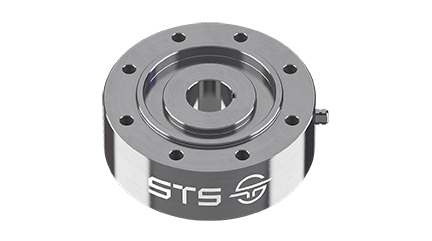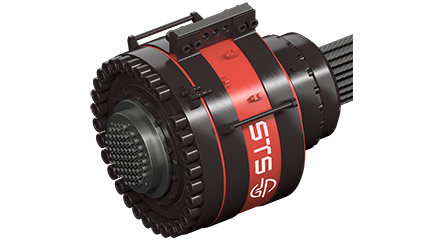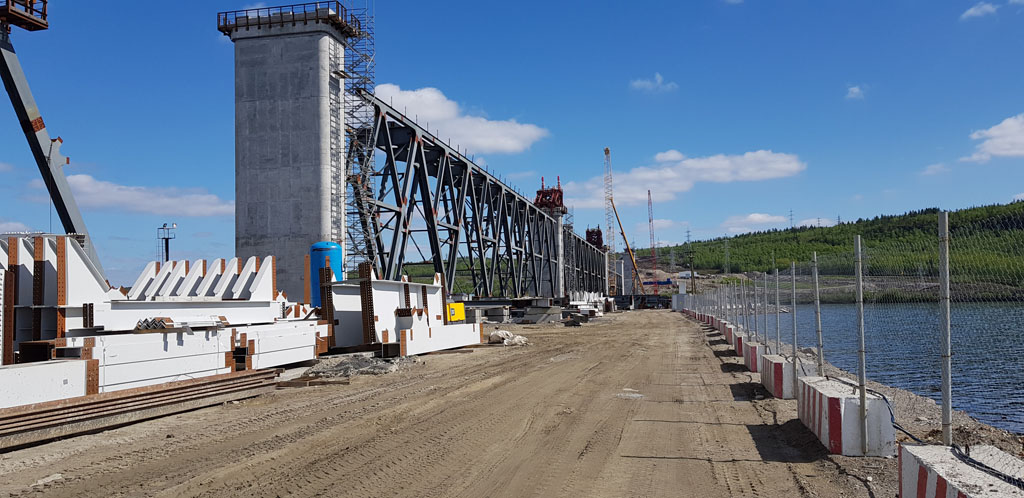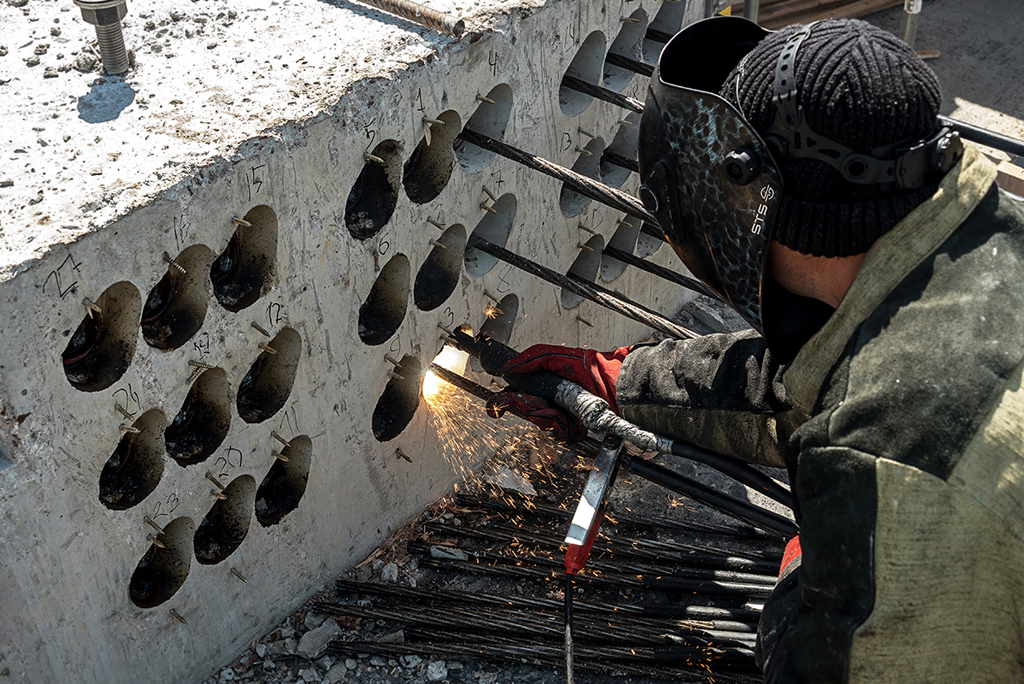Stay cables
The STS offers an elegant strand pylon to deck connection on your stay cable bridge project — The STS cable system that has been designed and tested to ensure the highest level of performance and to meet the most stringent market requirements, such as the latest fib 89 recommendations.
Corrosion protection
Corrosion protection is achieved by the addition of various protective layers surrounding the stays.
Resistant to fatigue loads
The use of high-performance wedges and bend deviators placed in the transition area of the anchor strands provides an exceptionally safe solution for the long-term use of the stay cable system.
Maintenance
Our multi-strand system allows the replacement of single strand and easy inspection of all components. The system meets the demand for a sustainable technology which minimises maintenance costs throughout the entire product lifecycle.
Vibration control
The combined use of compacted stay pipe with helix ribs on the outer surface and various types of dampers, both internal and external, provides an adequate solution to minimise wind resistance and reduce vibrations.
Simple and efficient installation
Dedicated lightweight special equipment and installation procedures, which are continually being refined, allow flexible installation schedules to meet the Contractor’s needs for reduced installation work on the critical path.
Improved aesthetics
The use of coloured ducting in compact sizes, special pin-type fixings and various technical solutions for different applications enables owners and designers to create stylish solutions that are attractive to all users.

Testing STS stay cable system in accordance with fib89 recommendations
Stay cable vibration
International guidelines for cable-stayed systems require dynamic effects to be assessed on every project.
The STS provides designers with a cable-stayed vibration risk assessment and offers a number of developed solutions.
Stay pipe
The STS stay pipe is equipped with a special helical rib to reduce vibrations caused by wind and rain. The effectiveness of this solution has been proven in full-scale wind tunnel tests.
Vibration dampers
To further reduce vibration, the cable is fitted with special vibration-damping devices.
The STS vibration dampening system helps to cope with excessive vibrations caused by temporary payloads and wind effects. Vibration reduction is very important to prevent problems associated with structural fatigue, excessive movement and instability.
STS offers 3 types of dampers: friction dampers, hydraulic dampers and elastic dampers.

STS stay cable system installation at the bridge over the river Zeya, Blagoveshensk (Russia)
Elastic Damper
These devices are based on special pads made from high-damping elastic material which dissipates kinetic energy from vibration through its deformation. Each damper can be fitted with more than one such cushion, which is mounted on the cable guide tube.
The elastic type STS damper is most effective on short and medium lengths of the cable. It is possible to install a second damper on the pylon side of the cable if necessary. This type of damper has the ability to be inspected or replaced during the operation of the structure, although it can work for long periods of time without the need for repairs and inspections.
The stable performance of the damper has been confirmed by dynamic testing over 10 million cycles.
Friction dampers
Passive damping devices based on friction force. The devices can either be of internal design, where they are mounted inside a steel guide tube, or alternatively as an external damper attached to the cable on a free length by means of a damper body and external attachment.
In case the transverse force on the cable at the damper mounting location exceeds the static friction force, the damper starts to move together with the strands and dissipates the energy, which leads to damping of the cable oscillation.
Hydraulic dampers
Hydraulic dampers are specially designed to counteract vibrations on cable-stayed systems. The principle is based on the resistance caused by the rapid passage of a viscous fluid through a narrow opening — vibration energy is dissipated by choking and compressing the hydraulic fluid. This principle of energy dissipation makes it possible for the damping device to react independently and in real time to the oscillations of the cable.
The damping system consists of a hydraulic cylinder and can have both internal and external configurations.





